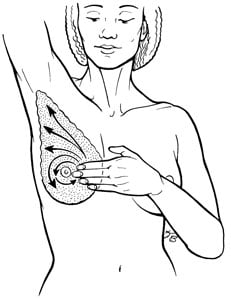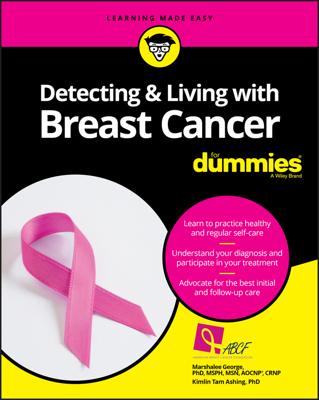One woman in nine will develop breast cancer in the United States. Because of this risk, every woman must know how to do a breast self-exam. Examining your breasts for cancer is easy but critical. Because our bodies often store any toxins that we absorb in fatty tissues (which are the bulk of abreast), the breasts are a common cancer site for women. As of age 20, monthly at-home breast exams should be part of every smart, healthy woman’s routine.
The image below shows one common technique for checking your breasts for signs of cancer. Most doctors recommend lying down with one arm behind your head. With the other hand, gently press down on the breast nearest to your raised arm. Work your way in small circles until the entire breast, including the area out to your armpit, has been checked for lumps.

When checking your breasts, you are looking for anomalies — things that feel strange — basically a lump of some sort. If you find something, don’t panic. Most lumps are not at all dangerous, but you should consult with your physician as soon as possible. And if what you find is an early sign of cancer, be thankful that you did locate it early because, in most cases, it’s treatable.
You should be consistent about the time of the month you conduct this exam because your breasts change as you go through your menstrual cycle. The most accurate time to check is just after your period. By examining your breasts at the same point in your cycle, you can make a more accurate comparison.
You should also have regular breast exams by a health professional, who may detect something that you would miss, and go for a mammogram whenever your physician instructs you to do so. The older you are, the more important these exams become, and the more regular they should be. After a woman turns 40 she should definitely go once a year (though some say that waiting until you’re 50 to begin getting tested annually is okay), and that rule applies to even younger women if they are in a high risk group.
You may be in a high risk group if
You have a family history of breast cancer.
You have never been pregnant.
You had your first child after age 30.
You began menstruating before the age of 12.
You’re obese.
You eat a high-fat diet.
You’ve already had cancer in one breast.
Check with your doctor to determine the best regimen for you.

